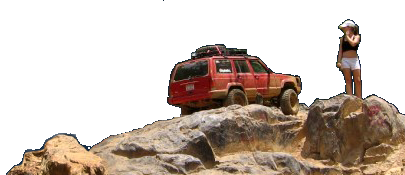Down&Dirty
Well-Known Member
- Joined
- Jun 26, 2005
- Location
- Greenville SC
cham·fered, cham·fer·ing, cham·fers
1. To cut off the edge or corner of; bevel
1. To cut off the edge or corner of; bevel

 After spending time there for my undergrad and masters I am glad to be heading some place else in Jan. At least you are asking. From the looks of the recent posts you have your hands full.
After spending time there for my undergrad and masters I am glad to be heading some place else in Jan. At least you are asking. From the looks of the recent posts you have your hands full.so let me know if you want any visuals in the next little while.

Don't use radius arms in the rear.


II mean I realize its not gonna flex as well as a 4 link but from what I've seen it flex's plenty enough for me, im not tryin to build a super flexy rock buggy more of a stout all around truggy type deal that i can bounce off rocks, trees, steel reinforced concrete walls, ya know the usual


